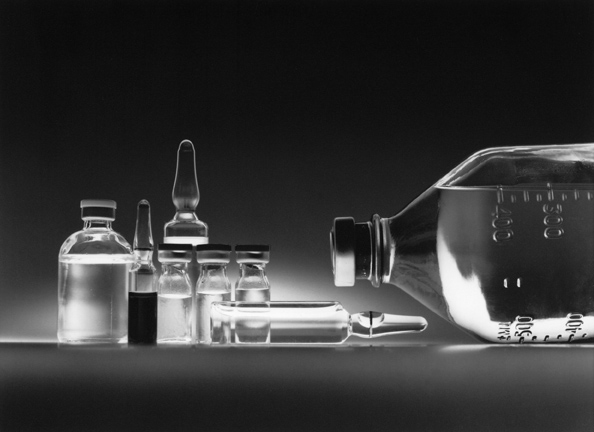Regional Chemotherapy
Regional Chemotherapy As Distinct from Systemic Chemotherapy
Most chemotherapy is administered systemically – meaning it enters the body through the veins, muscles or mouth and travels through the body in the bloodstream. (Indeed most chemotherapy is systemic anti-cancer therapy SACT). This gets the medicine to the cancerous cells but it also gets the medicine to healthy cells, which is why chemotherapy produces side effects. Regional chemotherapy means administering the chemotherapy in a manner so it stays (or tends to stay) in one section of the body – the section with the cancer. This allows the doctor to administer higher local doses of the drug, knowing that the drug will not go to the rest of the body and produce side effects. If body-wide side effects are what limits the dose, regional chemotherapy allows a higher dose in the area that has cancer.

Public domain photo from NCI – Bill Branson (Photographer)
This works only if the chemotherapy solution can be put in an appropriate body cavity or directed preferentially to the area with the cancer. Doctors have applied regional chemotherapy to the spinal column, the abdomen, and inside membranes surrounding affected organs. Another method is to inject the chemo agent to an artery that feeds the affected area. Most intravenous administration puts the drug into a vein. By the time it gets to the tumor, it is diluted. An intravascular catheter allows administration so the concentration of medicine in the blood supply to the malignant cells is higher. Factors that influence the effectiveness include how fast the body processes the drug (half-life) and how fast the drug leaks from the area it is intended for.
In recent decades medical technology has introduced implants such as pumps and ports that facilitate administration of chemotherapy and these can make regional application easier. Doctors also employ tourniquets to cut sections of the body off and keep the chemotherapy drug in the diseased area.
Similar to regional chemotherapy, intra-arterial chemotherapy (IAC) is used to treat liver and pancreatic cancer. It involves use of a flexible tube called a catheter (which is used in many medical procedures.) The catheter is inserted in the leg (femoral artery) and pushed up the circulatory system until it reaches the disease organ. There a solution of chemotherapy medicine is released. For liver cancer the catheter goes to the hepatic artery.
Use of Regional Chemotherapy
This type of administration has been around since the 1950s.
Regional chemotherapy is often employed in the treatment of liver cancer and oncologists have used it in treating peritoneal mesothelioma cancer, T-cell lymphoma, AIDS–related lymphoma, breast cancer, esophageal cancer, ovarian cancer, and prostate cancer. The oncologist chooses regional or systemic administration based largely on the kind and stage of the cancer that’s being treated and the kinetics of the particular drug.
 Combining regional chemotherapy with surgery or hypothermia treatment is one way it is used. Doctors have also experimented combining regional and systemic chemotherapy administration to the same patient – perhaps as parts of a combination chemo administration.
Combining regional chemotherapy with surgery or hypothermia treatment is one way it is used. Doctors have also experimented combining regional and systemic chemotherapy administration to the same patient – perhaps as parts of a combination chemo administration.
Related: Pregnancy and Cancer